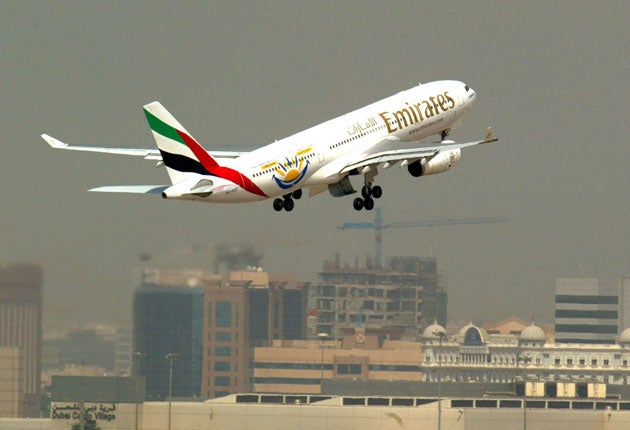Air disaster was narrowly averted after pilot error

It would have been, aviation experts say, Australia’s worst civil air disaster, and it was averted only by seconds. Details have emerged of how an Airbus carrying 275 passengers and 18 crew disappeared off radar screens soon after a botched take-off from Melbourne airport and narrowly avoided crashing into a densely populated residential area.
The Emirates Airlines plane bound for Dubai only just cleared a perimeter fence as it took off with great difficulty and struggled to gain altitude, after pilots miscalculated its weight by 100 tonnes. Flying low over houses, it vanished from view of the air traffic control tower shortly after 10.30pm and was invisible on radar screens, according to The Australian newspaper.
Controllers had no idea what had happened to the Airbus A340-500, but they feared the worst. “The aircraft was lost to sight against the lights of the industrial estate to the south,” said Rob Mason, president of the air traffic controllers’ union. “It was not high enough to be seen.”
The plane’s tail had hit the ground five times, sending sparks flying, as it lumbered down the runway. Limping into the air, it knocked out a strobe light and an antenna. Once airborne, the pilots realised the tail had been damaged and returned to Melbourne after dumping fuel.
According to a preliminary report by the Australian Transport Safety Bureau into the incident on 20 March, one of the pilots wrongly calculated the take-off speed after recording the aircraft’s weight as 262 tonnes. In fact, it was 362 tonnes. As a result, the take-off speed was far too slow, and the plane only lifted off after the captain ordered full thrust at the last minute.
Mr Mason said controllers became alarmed when Flight 407 was half-way down the floodlit runway. “My members told me the aircraft was not accelerating normally,” he said. “Then they saw sparks coming from the back of the aircraft as its tail struck the ground as it tried to become airborne.”
After using up the entire runway, the plane took off but flew so low over rooftops that it did not show up on controllers’ radar screens. They waited for minutes on end, terrified they were about to hear an explosion in the city’s southern suburbs.
“This would have been the worst civil air disaster in Australia’s history by a large margin,” said Ben Sandilands, an aviation expert. “There would have been no survivors from that plane, and it would have gone down in Keilor Park (a Melbourne suburb), so there would have been deaths on the ground also.”
The 42-year-old Danish captain had been flying for 22 years, said The Australian. But he was exhausted, having flown nearly 99 hours in the past month – close to Emirates’ monthly limit of 100 hours. His Canadian first officer was also experienced.
The pilots did not seem to notice the plane’s slow speed as it ran out of runway. At the last minute, the captain threw the engines into full thrust. “I knew we couldn’t stop,” he said later. “At that point I knew we just had to go. I thought I was going to die, it was that close.”
The Airbus made an emergency landing back at Melbourne, with the passengers unaware how close to catastrophe they had come. The captain and first officer have since resigned.
Join our commenting forum
Join thought-provoking conversations, follow other Independent readers and see their replies
Comments